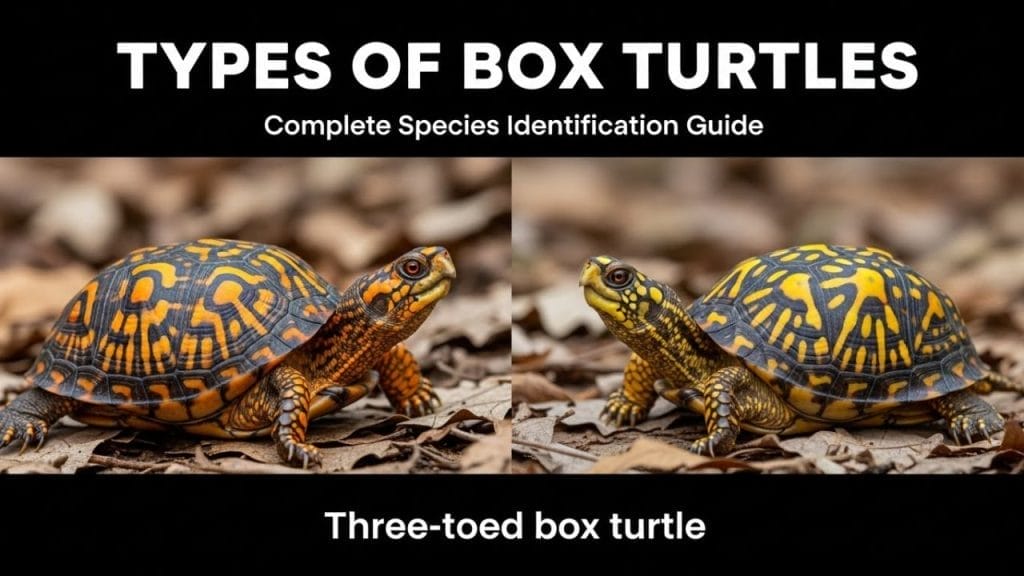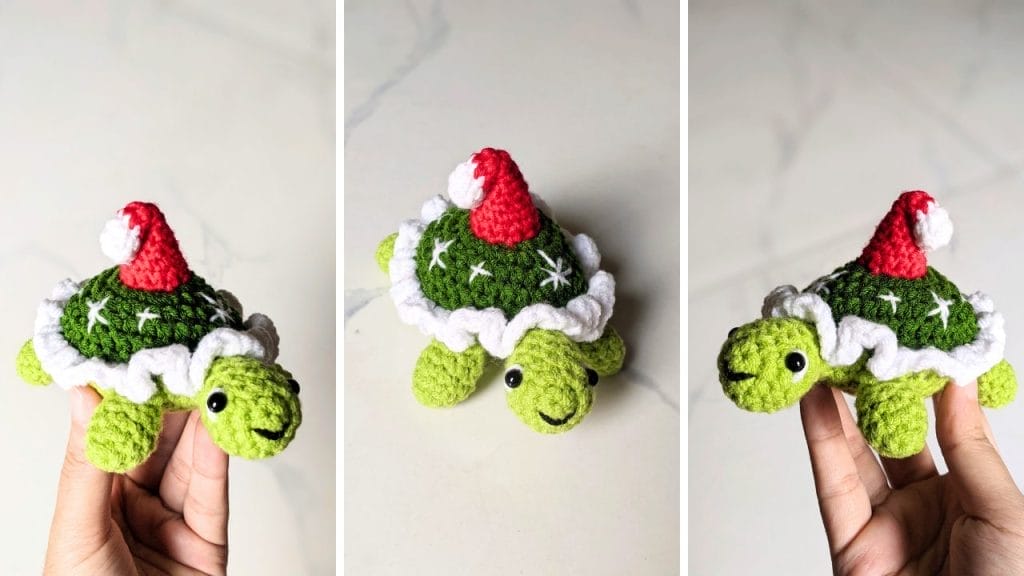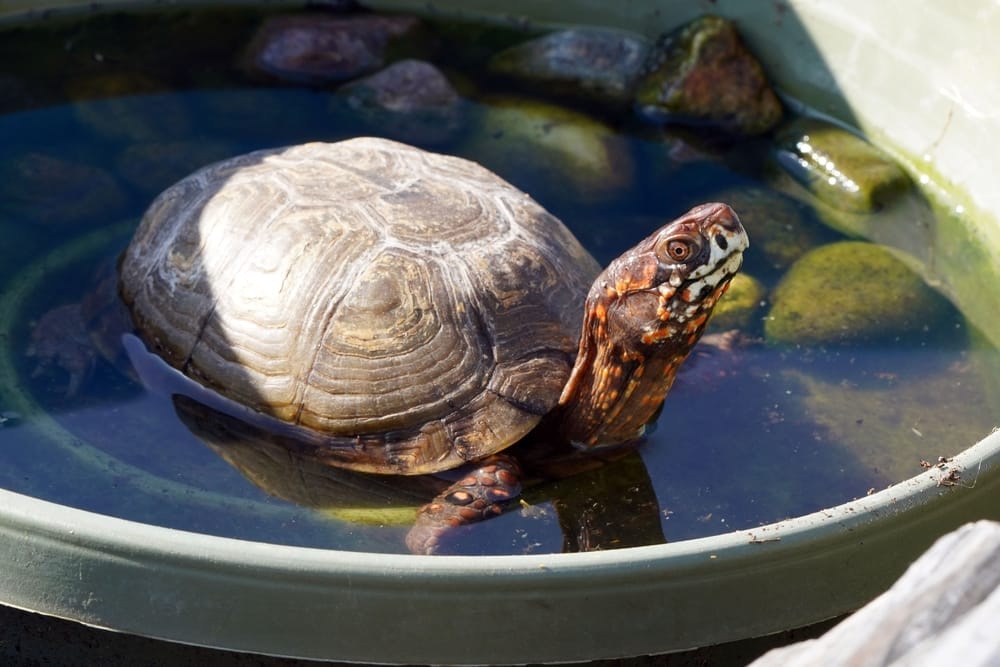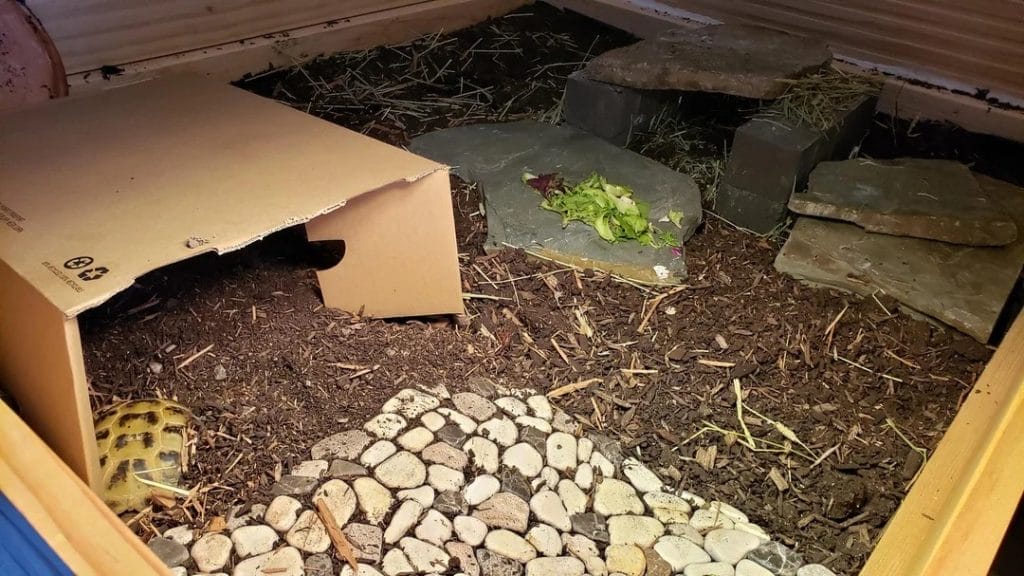11 Turtle Hibernation Facts You Haven’t Heard Before!
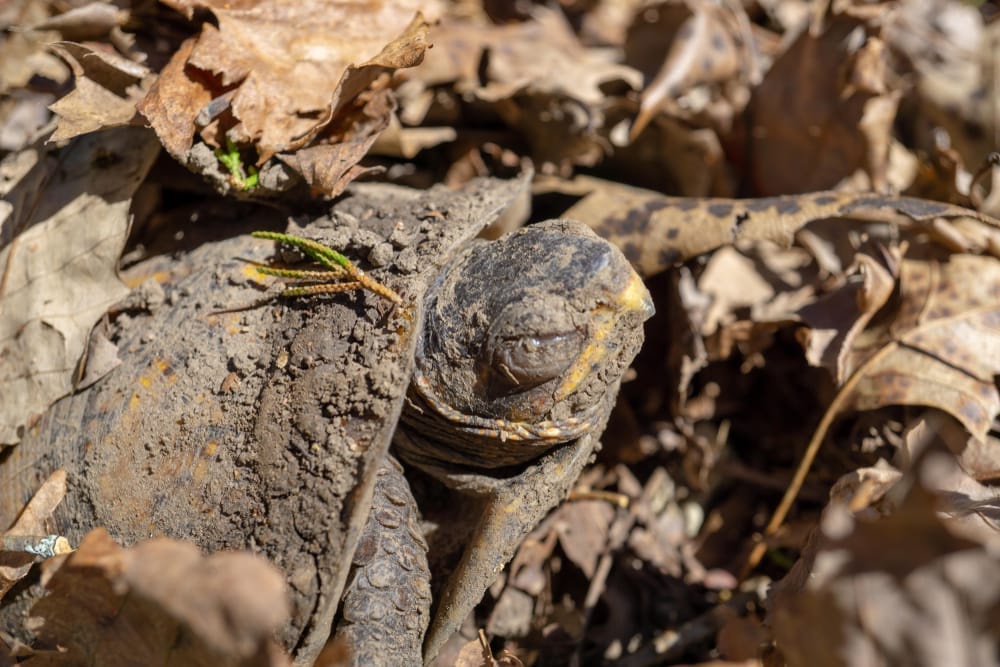
This post was created with help from AI tools and carefully reviewed by a human (Muntaseer Rahman). For more on how we use AI on this site, check out our Editorial Policy.
Think you know everything about your turtle’s hibernation? Think again. There are a few lesser-known facts that could make a world of difference for your pet’s health.
Before you let your turtle settle down for the season, check out these 11 surprising hibernation facts—some of them might completely change how you care for your shelled friend.
11 Turtle Hibernation Facts
Turtles are incredible creatures with unique survival mechanisms, and one of the most fascinating is how they handle colder weather.
While many people assume turtles “hibernate” like bears, the process they go through is actually different—it’s called brumation.

1. Brumation Isn’t True Hibernation
One of the most common misunderstandings about turtles is the assumption that they hibernate like mammals do. In reality, turtles go through a process called brumation, which is similar to but distinct from hibernation.
During hibernation, animals like bears slow their metabolism and rely on stored fat to survive through the winter. Turtles, on the other hand, don’t rely on fat in the same way.
Their bodies slow down significantly, but they don’t need to burn through their reserves as quickly. Turtles can survive months of inactivity with minimal food and water because their metabolic processes drop to nearly nothing.
I was shocked when I first learned this! I had a pet turtle and thought he would hibernate just like any other animal, but brumation is a completely different ballgame. This misunderstanding can sometimes lead to problems if people don’t realize their turtles need special care during this period.

2. Brumation Depends on the Species
Not all turtles experience brumation, and even among those that do, the process can vary greatly.
For instance, some species of turtles, especially aquatic ones like musk turtles or painted turtles, will brumate in water or mud, where temperatures remain stable and cold enough for them to go dormant.
They’ll stay submerged in ponds, rivers, or lakes for months, slowing their bodies down to a near standstill.
But did you know that not all turtles need to brumate? In fact, many tropical species don’t brumate at all because they live in consistently warm climates. If you own a species that hails from warmer environments—like a red-footed tortoise—you don’t need to worry about brumation.
The first time I owned a turtle, I didn’t know what kind it was. It’s super important to understand your turtle’s species before trying to help it brumate. Some turtles might be harmed by a brumation attempt if they’re not meant to go through it!
Many pet turtles kept indoors year-round don’t need to brumate at all if their environment stays consistently warm (above 70°F/21°C).
Important Note for Indoor Pet Turtles:
Many pet turtles kept indoors year-round don’t need to brumate at all if their environment stays consistently warm (above 70°F/21°C). If you’re keeping your turtle active through winter, make sure you’re maintaining proper conditions:
- Stable water temperature: 75-80°F maintained with a quality submersible heater
- Proper UVB lighting: Year-round UVB exposure (ReptiSun 10.0 T5 HO) to prevent metabolic bone disease
- Consistent basking temperatures: 88-92°F basking surface temperature
- Quality nutrition: Varied diet with proper calcium supplementation
Keeping your turtle active all winter? Our Complete Turtle Owner Essentials guide covers everything you need to maintain a healthy year-round environment, from proper heating equipment to UVB lighting to nutritional requirements.
This Hilarious Turtle Book Might Know Your Pet Better Than You Do
Let’s be real—most turtle care guides feel like reading a textbook written by a sleep-deprived zookeeper.
This one’s not that.
Told from the snarky point of view of a grumpy, judgmental turtle, 21 Turtle Truths You’ll Never Read in a Care Guide is packed with sarcasm, sass, and surprisingly useful insights.
And hey—you don’t have to commit to the whole thing just yet.
Grab 2 free truths from the ebook and get a taste of what your turtle really thinks about your setup, your food choices, and that weird plastic palm tree.
It’s funny, it’s honest, and if you’ve ever owned a turtle who glares at you like you’re the problem—you’ll feel seen.
3. Age and Weight Matter More Than You Think
Before your turtle can safely brumate, they need to meet certain physical requirements. Turtles should be at least 1 year old and at a healthy weight for their species before attempting brumation.
Hatchlings and juvenile turtles don’t have the energy reserves needed to survive months without food. Underweight adult turtles are also at serious risk.
A good rule of thumb is that your turtle should feel heavy and solid when you pick them up, not light or hollow.
If you’re unsure about your turtle’s weight status, your reptile vet can help you determine if they’re ready for brumation.
I’ve seen too many stories of young or underweight turtles that didn’t make it through brumation. It’s heartbreaking, but completely preventable with proper preparation.
Building healthy weight before brumation:
Turtles need proper nutrition year-round to build the reserves necessary for brumation. A healthy weight comes from:
- High-quality commercial turtle food (Mazuri or Zoo Med Natural Aquatic) as the base diet
- Proper calcium supplementation (Rep-Cal with D3) 2-3 times per week
- Varied protein sources (earthworms, crickets, feeder fish)
- Leafy greens and vegetables for omnivorous species
Check our turtle nutrition guide for feeding schedules and supplement recommendations to keep your turtle at a healthy weight year-round.

4. Controlled Environments Work Best for Brumating Turtles
If you own a turtle that brumates, creating a safe environment for them is essential. In the wild, turtles can rely on the natural cycle of weather to help them enter brumation.
But in captivity, the situation is different. Many turtle owners turn to refrigerators as a brumation environment!
Yes, you read that right—refrigerators. It might sound odd, but using a fridge allows you to maintain a stable, cool temperature that mimics the natural winter environment a turtle would experience.
The key is to ensure the temperature stays constant and doesn’t drop too low.
Some turtles need to brumate in temperatures as low as 38°F to 50°F (3°C to 10°C). Any higher, and they might not enter brumation properly; any lower, and they could die.
I’ve never personally used a fridge for a pet, but I’ve read about it a lot.
Remember, the refrigerator method requires precise temperature monitoring with a reliable thermometer and regular health checks every few weeks.
Critical equipment for brumation monitoring:
If you’re attempting controlled brumation, you need precise temperature monitoring:
- Digital thermometer with probe: Track exact fridge temperature 24/7
- Backup thermometer: Redundancy is critical – if one fails, you need to know immediately
- Temperature data logger: Records temperature fluctuations when you’re not watching
For turtles that DON’T brumate (kept active year-round), you still need temperature monitoring equipment:
- Infrared temperature gun: Check basking surface temps (should be 88-92°F)
- Digital water thermometer: Monitor water temperature (should be 75-80°F)
- Ambient thermometer: Track air temperature in the enclosure
See our heating and monitoring equipment guide for specific product recommendations.

5. Temperature Fluctuations Are Dangerous
For turtles in brumation, maintaining a consistent temperature is more important than you might think.
If the temperature fluctuates too much—especially if it rises too high—the turtle might come out of brumation prematurely, which could be harmful or even fatal.
When a turtle’s body is in a state of brumation, everything slows down: their breathing, heart rate, and digestion all nearly stop. But if they’re suddenly exposed to warmer temperatures, their metabolism can kick back into gear too quickly.
This can cause serious health issues because they aren’t fully prepared to be awake, and their body isn’t functioning at full capacity yet.
This is one of the reasons why using controlled environments, like the fridge I mentioned earlier, is so useful. It keeps things steady and predictable, reducing the risks.

6. Turtles Can Survive Without Oxygen for Months
One of the coolest facts about turtle brumation is their ability to survive underwater without oxygen for long periods.
When turtles brumate, especially aquatic ones, they often do so in water. Since they’re not breathing oxygen, they have to rely on another system to stay alive.
Turtles can actually shift their metabolism to survive without oxygen for months by using calcium stored in their shells!
This process allows them to buffer the acidic toxins that build up in their bodies when oxygen levels are low. Essentially, their shells act like natural antacids.
I couldn’t believe this when I first read about it. Imagine being able to survive for months without oxygen! Turtles truly are some of the most amazing creatures.
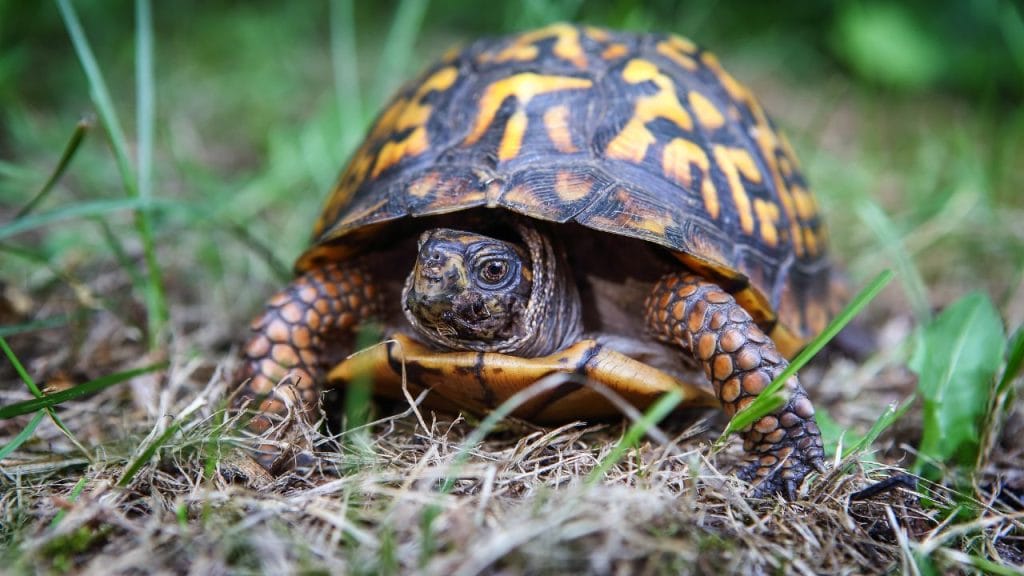
7. Hydration Is Critical Before Brumation
Before your turtle enters brumation, making sure they’re well-hydrated is key.
Since their metabolism slows down so much during brumation, they don’t eat or drink, but their body still needs a certain level of moisture to function properly.
Dehydration can be dangerous during brumation, as it increases the risk of health complications. A well-hydrated turtle is better equipped to handle the months of dormancy.
One simple way to keep your turtle hydrated is to give them regular soaks leading up to brumation.
I always make sure my turtle gets a good soak, especially if I notice it’s heading towards its dormant period.
Water quality matters year-round:
Whether your turtle is preparing for brumation or staying active through winter, clean, properly treated water is essential.
For active turtles, maintain water quality with:
- Water conditioner (Seachem Prime) for every water change – removes chlorine and chloramine
- Regular testing (API Freshwater Master Test Kit) to monitor ammonia, nitrite, and nitrate levels
- Powerful filtration to handle turtle waste production (canister filter rated 2-3x tank volume)
Poor water quality before brumation can lead to health issues during dormancy. Our water treatment and filtration guide covers everything you need to maintain pristine water conditions.
8. The Pre-Brumation Fast Is Non-Negotiable
Here’s something crucial that many turtle owners don’t know: your turtle needs to fast for 2-6 weeks before entering brumation. This isn’t optional—it’s literally a matter of life and death.
During brumation, your turtle’s digestion slows to almost nothing. Any food left in their system can rot and release deadly toxins. The fasting period allows their digestive system to completely empty before they go dormant.
Stop feeding your turtle when temperatures consistently drop below 60°F (15°C), or if you’re planning controlled brumation. Continue offering water during this fasting period, but no food whatsoever.
I know it seems harsh, but this fasting period is what keeps them safe during the months ahead.

9. Health Monitoring Is Essential Before Brumation
Not every turtle is fit to go through brumation. If your turtle is underweight, sick, or battling any kind of health issue, brumation could be incredibly risky.
Their body won’t have the energy reserves or strength to survive the long period of inactivity.
That’s why it’s important to do a health check-up before letting your turtle go into brumation.
Taking your turtle to a vet who’s experienced with reptiles can help identify any potential problems beforehand. Some turtles might even need to skip brumation entirely if their health is in question.
I always check in with my vet to make sure my turtle is in good shape before winter comes. It gives me peace of mind, knowing my pet is safe and ready for brumation.
Year-round health starts with proper care:
The best way to ensure your turtle is healthy enough for brumation? Maintain excellent care throughout the year.
Common health issues that prevent safe brumation:
- Metabolic bone disease – caused by inadequate UVB or calcium
- Respiratory infections – often from incorrect temperatures
- Shell rot – from poor water quality
- Nutritional deficiencies – from improper diet
These problems are preventable with proper equipment and care. Our Complete Turtle Owner Essentials covers:
- UVB lighting requirements to prevent MBD
- Proper heating to prevent respiratory issues
- Filtration and water care to prevent infections
- Nutrition and supplements for optimal health
10. Know the Warning Signs During Brumation
Even with perfect preparation, you need to monitor your brumating turtle periodically. Check on them every 2-4 weeks, looking for warning signs that something’s wrong.
Red flags include unusual odors (which could indicate infection), visible weight loss, any discharge from the nose or mouth, or floating at odd angles if they’re brumating in water.
If your turtle is in a controlled environment like a fridge, any sudden movement or activity could indicate temperature problems.
Trust your instincts—if something seems off, it probably is. When in doubt, gradually warm your turtle and consult your vet immediately. It’s better to interrupt brumation early than risk losing your pet.
11. The Wake-Up Process Requires Patience
When brumation ends (usually after 2-5 months), don’t expect your turtle to bounce back immediately.
The warming process should be gradual—increase temperatures slowly over several days to let their metabolism restart properly.
Once awake, focus on rehydration first. Offer warm soaks and fresh water before attempting to feed them.
Most turtles won’t eat for the first week or two after brumation, and that’s completely normal. Their appetite will return as their system fully wakes up.
Some turtle owners panic when their pet doesn’t eat right away, but patience is key. Let your turtle set the pace for their recovery.
Post-brumation nutrition:
When your turtle’s appetite returns, focus on nutrient-dense foods to help them recover:
- High-protein commercial food (Mazuri Aquatic Turtle Diet) for the first few weeks
- Calcium supplementation (Rep-Cal with D3) at every feeding initially, then taper to 2-3x per week
- Easily digestible proteins like earthworms and bloodworms
- Hydrating vegetables like cucumber and zucchini for omnivorous species
Check our turtle feeding guide for complete nutrition information and recovery feeding schedules.
Final Thoughts
By learning these lesser-known facts about turtle brumation, you’ll be better equipped to keep your pet turtle healthy and safe during this crucial time.
Remember, not all turtles need to brumate—many indoor pets can skip it entirely if kept in consistently warm environments.
For those that do brumate, proper preparation with fasting, health checks, and controlled conditions makes all the difference.
Always consult with a reptile-savvy vet before your turtle’s first brumation.
Whether they brumate naturally outdoors, in water, or in your carefully monitored refrigerator, being prepared and informed is what keeps your shelled friend safe through winter.

About Author
Muntaseer Rahman started keeping pet turtles back in 2013. He also owns the largest Turtle & Tortoise Facebook community in Bangladesh. These days he is mostly active on Facebook.


